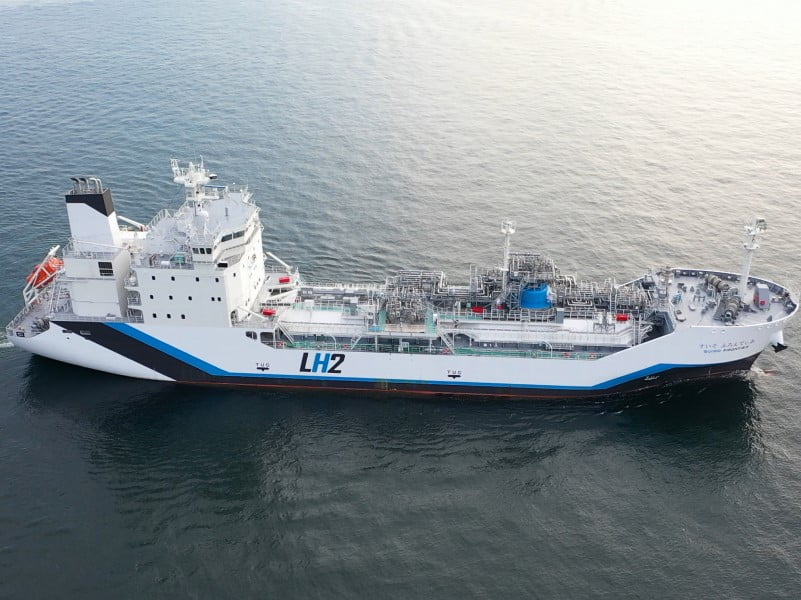Australia’s national hydrogen strategy is set for a review following an agreement by state and federal energy ministers at the first meeting of the Energy and Climate Change Ministerial Council on Friday.
The review aims to “ensure the national strategy positions Australia on a path to be a global hydrogen leader by 2030 on both an export basis and for the decarbonisation of Australian industries”, according to the meeting’s communique.
It will consider the impact of global hydrogen industry policy since the initial strategy was published three years ago, with the meeting communique highlighting the United States’ Inflation Reduction Act (IRA) in particular. The IRA includes US$369 billion for ‘energy security and climate change’ activities and a US$3 per kilogram hydrogen production tax credit.

The Australian Hydrogen Council welcomed the agreement for a review, with chief executive Dr Fiona Simon reiterating that global “competition for hydrogen projects is fierce”.
“Significant financial incentives have been announced by various countries, with each jostling for first mover advantage. The international funding and policy approaches announced to date demonstrate governments’ recognition that a profound restructuring of the energy system is required and that this is about maintaining economic prosperity for their nations,” Dr Simon said.
“We are already hearing that Australian projects are being de-prioritised where there are choices. The Inflation Reduction Act means that we are now in a race because there is limited land, equipment and people to deliver this energy transition. Australia has some vital ingredients, but we will be relying on other nations to support the scale-up of the hydrogen industry.
Development of the last hydrogen strategy, released three years ago, was led by former chief scientist and the government’s special adviser on low emissions technology Dr Alan Finkel.
Speaking at the inaugural Australian Hydrogen Research Conference earlier this month, Dr Finkel said it is “perhaps time” to update the National Hydrogen Strategy to support the development of a value-added hydrogen industry.
At the time, he said an updated hydrogen strategy should include a focus on “the use it where you make it philosophy” to increase the use of Australian green hydrogen in local value-added products, such as green iron and synthetic jet fuel.
Australia’s pipeline of hydrogen investments has a higher total cost than any other resources and energy development pipeline. Taking a snapshot of global hydrogen pipeline developments in October 2022, the International Energy Agency noted that Australia would be the largest hydrogen exporter by 2050.
A cross-jurisdictional working group on the development of Australia’s offshore renewable energy industry will also be established, with the Commonwealth to “lead progression of priority offshore zones in a timely manner”, according to the communique.
Several other emissions reduction and energy price management agreements were made by the ministers.
This includes establishment of a decarbonisation working group, which will set consistent principles for reporting on Australia’s progress towards net-zero and produce a work program for ministers to consider, and Australia’s first National Climate Risk Assessment.
The Clean Energy Council welcomed the ECMC agreements in a statement. It also called for a long-term Renewable Energy Superpower Masterplan to provide “investment certainty and to realise the full economic potential for the global transformation to clean energy”.
“Taken collectively, today’s announcements show that the Energy Ministers are moving in the right direction: to remove the roadblocks preventing the clean energy transition and holding Australia back in the global race to be a clean energy superpower,” the statement reads.
The first ECMC meeting took place in the Hunter Valley in NSW. The next meeting will take place in May in the Northern Territory.
Five strategic priorities were also agreed to for work in the coming 12 months:
- Transforming Australia’s energy system to align with net zero while providing more affordable, secure, and reliable energy to Australians, (including improving regulatory certainty and efficiency for, and accelerating delivery of, dispatchable renewable energy, storage and nationally significant transmission projects);
- Efficiently and effectively contributing to the achievement of all Australian emissions reduction targets;
- Investing in Australia’s adaptation and resilience to climate change;
- Empowering and comprehensively engaging with Australia’s regions and remote communities, including First Nations, on the pathway to decarbonisation and Australia becoming a renewable energy superpower;
- Delivering a coordinated and strategic approach to achieving improvements in energy productivity across the economy.
Do you know more? Contact James Riley via Email.

